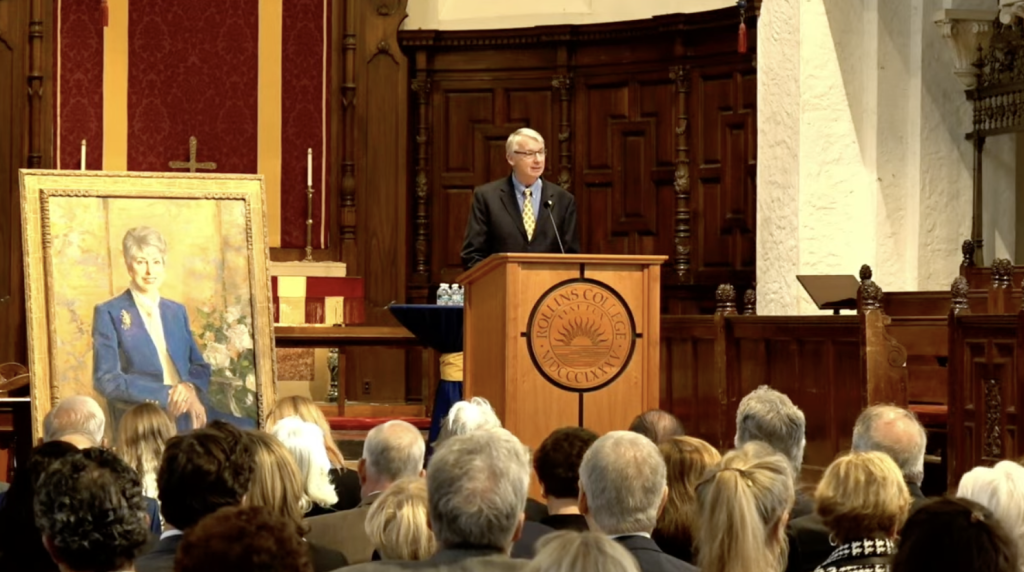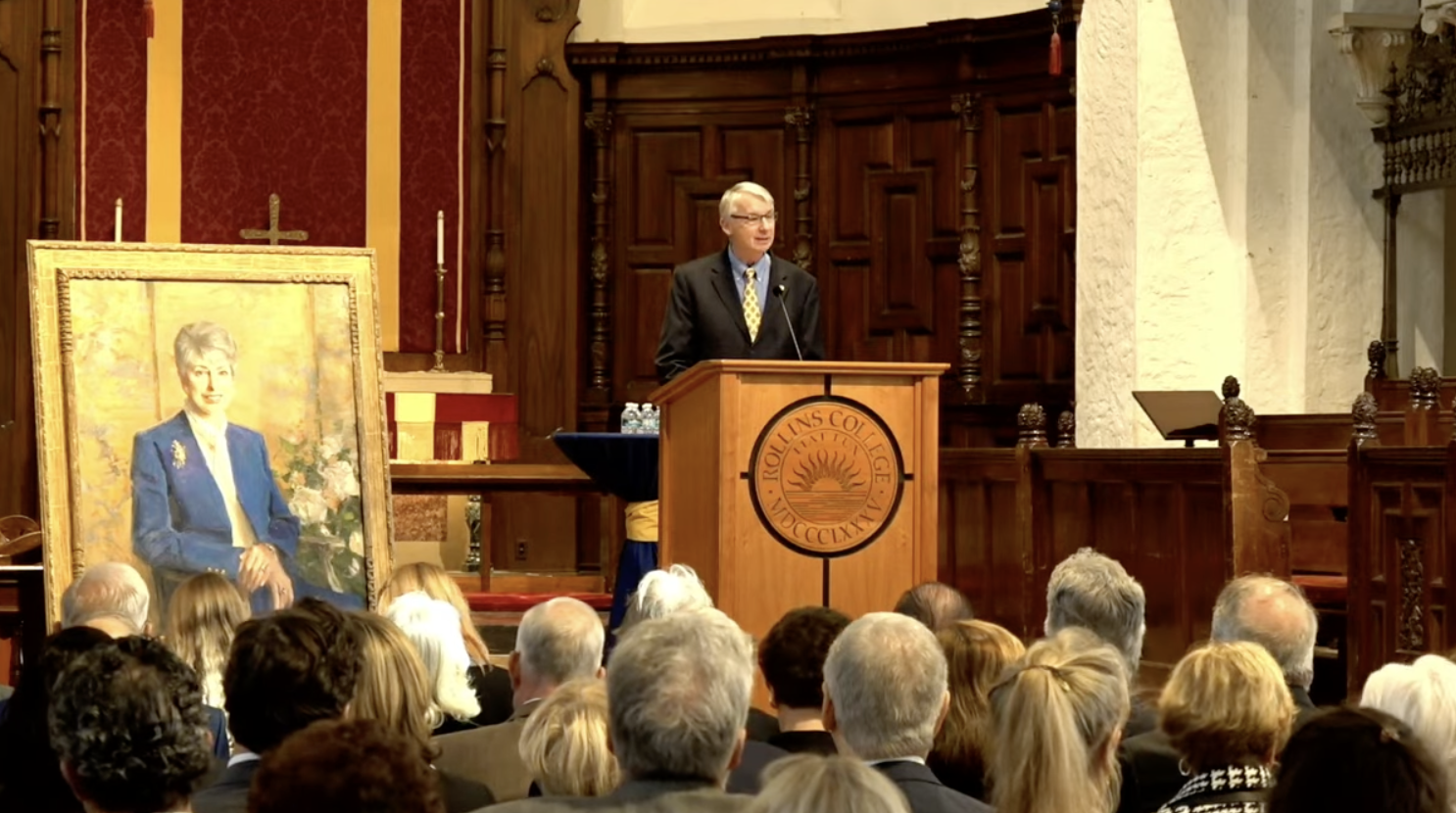
A golden-hued portrait of Dr. Rita Bornstein, Rollins’ 13th president (1990-2004), rested beside the lectern of Knowles Memorial Chapel on Jan. 29. The resplendent gong of the chapel bells repeated 13 times to commence a Celebration of the Life of Bornstein (2024), the first and only female president of Rollins College.
“Today will go, well, just as Rita would want it to. Now, how do I know? Because in true Rita fashion, she stipulated the whole program. I mean, the whole program” said President Grant Cornwell to knowing, tearful chuckles. “The sum total of our listening will be to wonder how one woman could have meant so much, for so many.”
Cornwell, Rollins’ 15th president, opened the list of 19 speakers, ranging from close friends, to family, to Rollins affiliates. Reflective anecdotes were plentiful—some reminisced on their poetry exchanges at Bornstein’s birthday party last year, others on life-changing wisdom she shared with them at just the right time, or long talks shared beside her bed while she was in hospice care at the Mayflower Retirement Community in Winter Park.
One thing became abundantly clear to all at the service: Bornstein was not just a feminist icon, mentor and caring friend to her Rollins students and colleagues, but also ushered in a fiscal and reputational renaissance for the school.
“Rita came to Rollins at the perfect time. After 100 years it had a meager 39-million-dollar endowment. Over the next 14 years, she fundraised aggressively, and left the college with an endowment of just over 260 million dollars—a seven-fold increase,” shared Trustee Allan Keen.
A college’s endowment is more than just a rainy-day fund. It is a collection of assets pulled from periodically, invested into projects, or saved up by an institution. Many American universities have amassed endowments surpassing the market values of a handful of countries combined. For example, the GDP of Bolivia at $44 million, can be compared to the endowment of Harvard University, which currently stands at $53 billion—or the University of Notre Dame’s endowment, which is valued at over $18 billion and ranks as only eighth-highest in the nation.
Rollins’ endowment stands at $361.8 million as of 2020, which is comparable to its liberal arts-neighbor, Stetson University in Deland, Florida at $381.5 million.
Endowments cannot be dipped into liberally, contrary to some prominent misconceptions. Stanford Magazine explains how 20 percent of Stanford University’s annual operating budget is reliant on income from investing its endowment money: “Stanford hopes to live forever, and costs go up over time—largely because about two-thirds of the university’s expenses are compensation for faculty and staff, and the cost of living in the Bay Area is high. So in order not to reduce the buying power of the endowment, the university needs to reinvest rather than spend some of the income it generates.”
Thus, the role of a college president extends beyond social obligations and leadership to include fierce fundraising and networking as a priority.
“Under Bornstein’s leadership, the number of endowed chairs tripled, enrollment grew by 60 percent, retention increased, and Rollins went from No. 6 in U.S. News & World Report’s annual rankings of the South’s best colleges to No. 1 in 2004,” wrote Laura J. Cole (’04) in Rollins News.
Bornstein’s legacy is not lost on the Winter Park community, and it is certainly not lost on the students who met her during her presidency.
“Much of who I am can be traced back to having this one woman decide that I was an eighteen year old worthy of her friendship and support,” shared alumna Chrissy E. Garton, smiling from the wooden chapel podium, who described Bornstein as a dear friend and mentor from the moment they met.
Garton stressed the late president’s impact on her in her adult life, but also from the lens of being an 18-year-old freshman who found a fierce, compassionate champion and advocate in Rita Bornstein. She closed, “I’d like to use my time up here to make an ask of the people in this room—particularly the women. I’d like to ask each of you to follow in Rita’s footsteps, by committing to mentor, or become a more engaged mentor to a younger woman.”
Bornstein passed at 88 years old in Winter Park, FL, where she resided for 20 years after passing the presidency to Lewis M. Duncan in 2004, around the same time she was diagnosed with Parkinson’s Disease.
One of her favorite poems, “To be of use” by Marge Piercy, was poignantly printed on a leaflet within the pages of her memorial service program:
“I love people who harness themselves, an ox to a heavy cart,
who pull like water buffalo, with massive patience,
who strain in the mud and the muck to move things forward,
who do what has to be done, again and again.”






Comments are closed.